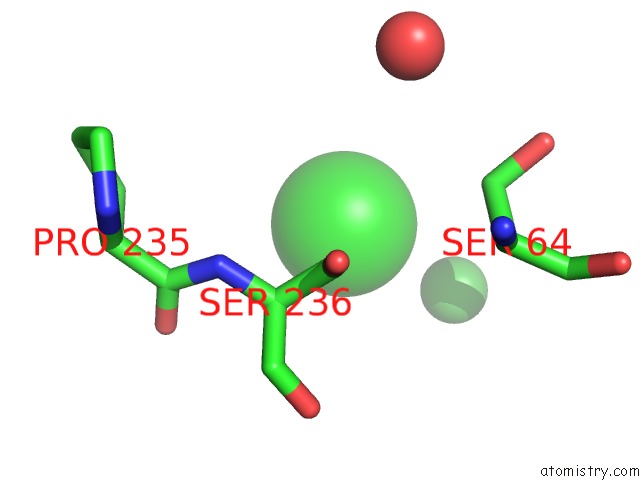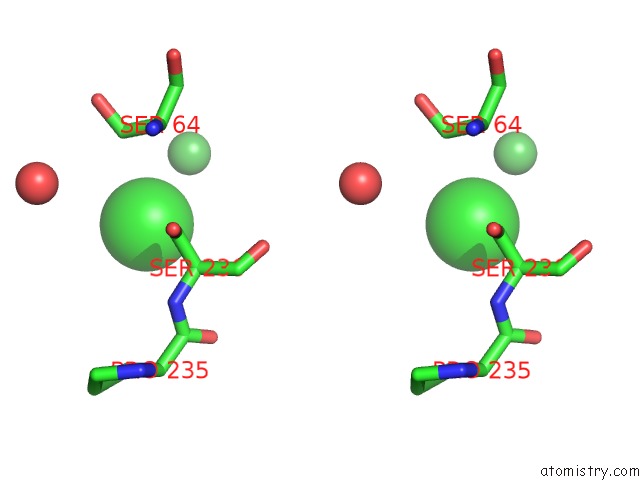Chlorine »
PDB 3hwp-3i67 »
3hwp »
Chlorine in PDB 3hwp: Crystal Structure and Computational Analyses Provide Insights Into the Catalytic Mechanism of 2, 4-Diacetylphloroglucinol Hydrolase Phlg From Pseudomonas Fluorescens
Protein crystallography data
The structure of Crystal Structure and Computational Analyses Provide Insights Into the Catalytic Mechanism of 2, 4-Diacetylphloroglucinol Hydrolase Phlg From Pseudomonas Fluorescens, PDB code: 3hwp
was solved by
Y.-X.He,
L.Huang,
Y.Xue,
X.Fei,
Y.-B.Teng,
C.-Z.Zhou,
with X-Ray Crystallography technique. A brief refinement statistics is given in the table below:
| Resolution Low / High (Å) | 25.99 / 2.00 |
| Space group | C 2 2 21 |
| Cell size a, b, c (Å), α, β, γ (°) | 124.785, 132.612, 95.059, 90.00, 90.00, 90.00 |
| R / Rfree (%) | 19 / 21.7 |
Other elements in 3hwp:
The structure of Crystal Structure and Computational Analyses Provide Insights Into the Catalytic Mechanism of 2, 4-Diacetylphloroglucinol Hydrolase Phlg From Pseudomonas Fluorescens also contains other interesting chemical elements:
| Nickel | (Ni) | 1 atom |
| Zinc | (Zn) | 2 atoms |
Chlorine Binding Sites:
The binding sites of Chlorine atom in the Crystal Structure and Computational Analyses Provide Insights Into the Catalytic Mechanism of 2, 4-Diacetylphloroglucinol Hydrolase Phlg From Pseudomonas Fluorescens
(pdb code 3hwp). This binding sites where shown within
5.0 Angstroms radius around Chlorine atom.
In total only one binding site of Chlorine was determined in the Crystal Structure and Computational Analyses Provide Insights Into the Catalytic Mechanism of 2, 4-Diacetylphloroglucinol Hydrolase Phlg From Pseudomonas Fluorescens, PDB code: 3hwp:
In total only one binding site of Chlorine was determined in the Crystal Structure and Computational Analyses Provide Insights Into the Catalytic Mechanism of 2, 4-Diacetylphloroglucinol Hydrolase Phlg From Pseudomonas Fluorescens, PDB code: 3hwp:
Chlorine binding site 1 out of 1 in 3hwp
Go back to
Chlorine binding site 1 out
of 1 in the Crystal Structure and Computational Analyses Provide Insights Into the Catalytic Mechanism of 2, 4-Diacetylphloroglucinol Hydrolase Phlg From Pseudomonas Fluorescens

Mono view

Stereo pair view

Mono view

Stereo pair view
A full contact list of Chlorine with other atoms in the Cl binding
site number 1 of Crystal Structure and Computational Analyses Provide Insights Into the Catalytic Mechanism of 2, 4-Diacetylphloroglucinol Hydrolase Phlg From Pseudomonas Fluorescens within 5.0Å range:
|
Reference:
Y.X.He,
L.Huang,
Y.Xue,
X.Fei,
Y.B.Teng,
S.B.Rubin-Pitel,
H.Zhao,
C.Z.Zhou.
Crystal Structure and Computational Analyses Provide Insights Into the Catalytic Mechanism of 2,4-Diacetylphloroglucinol Hydrolase Phlg From Pseudomonas Fluorescens. J.Biol.Chem. V. 285 4603 2010.
ISSN: ISSN 0021-9258
PubMed: 20018877
DOI: 10.1074/JBC.M109.044180
Page generated: Fri Jul 11 06:07:26 2025
ISSN: ISSN 0021-9258
PubMed: 20018877
DOI: 10.1074/JBC.M109.044180
Last articles
Fe in 2YXOFe in 2YRS
Fe in 2YXC
Fe in 2YNM
Fe in 2YVJ
Fe in 2YP1
Fe in 2YU2
Fe in 2YU1
Fe in 2YQB
Fe in 2YOO